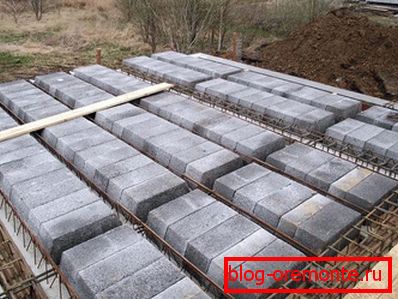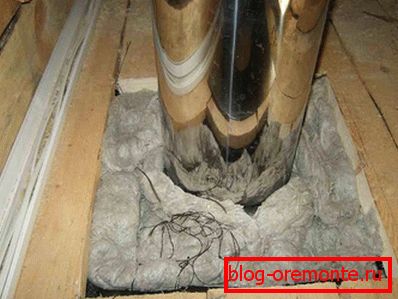How to make a ceiling
Building a house with your own hands is always a very time consuming and difficult process. One of the crucial points is the correct choice of the ceiling. There are several options for how to make a ceiling in a private house. It is necessary to consider all the features of the designs of different types.
Ceiling requirement
- The ceiling is used to separate the floors of the room between them and separates the rooms from the attic space. The load on these structures is significant, so it is very important high structural strength.
- The material should contribute to the preservation of heat in the room and block sound vibrations.
- Ceiling should comply with fire safety conditions.
Note! The coating must necessarily have sufficient rigidity so that no deflection occurs under any loads.
What is the ceiling

In order to start making a ceiling with your own hands, it is necessary to study what ceiling ceilings can be and understand their advantages and installation methods.
Ceilings are:
- interfloor,
- attic
- basement,
- basement.
The overlap can be a beam, while using beams of different material, and girder - built with the use of plates and solid panels.
Slabs

Such a ceiling is practically not used for private houses due to the large weight of the material. Slabs are mainly used in the construction of large apartment buildings or industrial buildings.
Sometimes tiled ceiling is used in the construction of brick private houses. It is distinguished by a number of significant positive qualities: long service life, the ability to achieve a perfectly smooth coating, structural strength and fire resistance.

Various types of plates are used: hollow or solid. Hollow products that have a lower weight and increase the level of sound and heat insulation are more often used in the construction of a ceiling for private houses.

Slabs can be monolithic and prefabricated. Slabs of prefabricated differ in the method of connection: some are connected by means of wire, others - welded - are connected by welding.
The lack of use of solid panels in their considerable size and weight. For their installation requires the help of special equipment.
Note! Such plates have a certain size, and it is necessary to build a room for it, or to order individual production of plates of the desired size.
Wood flooring installation

In the case of individual construction, ceiling ceilings made using wood beams are most often used. Wooden beam to perform floors in a private house is used because it has several advantages:
- such a ceiling does not make the structure heavier,
- there is no need to use special equipment
- has durability and environmental friendliness
- material cost is moderate.
The only significant drawback of overlappings made of wooden beams is the limitation of the span width during overlapping, up to a maximum of 6 meters.

Note! When using a chimney in a private house, the installation of the beams is carried out in such a way that there is no intersection with the pipe stroke, you need to keep a distance of 40 cm.
In the manufacture of beams using deciduous and coniferous trees. The tree should be sufficiently dried and tested for rot or cracks. Rejected beams cannot be used during construction.
Installation Procedure

- Before using the wood should be treated with antiseptic to avoid further damage from the fungus. The ends of the beams are smoked and wrapped with roofing felt several times.
- A nest is pre-prepared for the beam; the prerequisite is that the end of the beam must be chamfered. To align the beams on the plane using boards of different thickness. The void, which inevitably remains in the nest, is poured with foam.
- Next, a roll forward of the bars, which serve as the basis for the future ceiling, is created. Usually for cranial bars use pine timber, pre-treated with an antiseptic. They are laid perpendicular to the floor boards, which are also treated with an antiseptic.
- After that, construct a layer that provides sound and heat insulation. For these purposes, different materials can be used: sand, expanded clay, slag, sawdust can be used. Ideal use of mineral wool, it tends to breathe and has a small weight. Before laying the insulation layer is laid film for vapor barrier.

Due to the fact that the wooden interfloor overlappings do not have a large mass, they allow to save on the construction of the foundation of increased power.
In order to properly perform the ceiling, it is necessary to explore all the nuances of this process, you can view the video.
With proper performance of work, it is possible to ensure high strength indicators of the structure, comfortable conditions of heat and sound insulation.
Metal overlap

When building a ceiling with metal beams, one should take into account low thermal and sound insulation, as well as the possibility of corrosive changes at high humidity.
The advantages of such overlap in high strength and durability of the design, in the ability to carry out the overlap on a larger area of the span.
Ceiling will require:
- metal beams,
- reinforced concrete slabs, lightweight concrete or wood,
- plaster grid,
- waterproofing material,
- plaster,
- flooring from boards.
Concrete overlap

With the help of reinforced concrete beams very rarely do overlap in private homes. This is due to the very large weight of the material. For such work requires special equipment, do not cope with their own hands.
These beams can block spans of 3-7.5 meters, between beams the empty space is filled with concrete or hollow blocks.